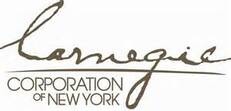Advancing the Use of Digital Museum Assets in Schools

PIs:
Stephanie Norby, Smithsonian Center for Learning and Digital Access
Mark Warschauer, University of California, Irvine, School of Education
Investigators:
Nicole Gilbertson, University of California, Irvine, History Project
Doron Zinger, University of California, Irvine, School of Education
Project Funding: Carnegie Corporation, grant number B9092
Project Duration: October 1, 2015, to September 30, 2017
Summary: Most students will never visit Smithsonian museums; however, they may experience some of the Smithsonian’s collection digitally in their classrooms through the Smithsonian’s Learning Lab. The goal of this project was to advance the use of digital museum resources and tools in K-12 classrooms. This research investigated how teachers use curated digital assets in their classroom, and how they design and use lessons created from museum digital assets. Teacher learning was supported through professional development, by building a network of educators that create and review lessons, providing tools for customization, and supporting a community of practice.
Objectives of the study included to:
The study took place in Pittsburgh in collaboration with the Allegheny County Intermediate Unit (part of Pennsylvania’s public education system and offers teacher professional development and other educational services to Allegheny County’s 42 suburban and rural school districts) and the Heinz History Center (a Smithsonian affiliate and Pennsylvania’s largest history museum). A cohort of 30 middle school social science teachers participated initially, and an additional cohort of high school social science teachers participated in the second year of the study. Participating teachers attended a professional development on the use and navigation of the Smithsonian Learning Lab, and then received additional ongoing support. As part of the study, the Smithsonian Learning Lab was made available to other teachers who would use it online.
Data collected for the study included teacher navigation; use of the Smithsonian Learning Lab; lesson plans created, used, and modified by teachers from the collection available at the Smithsonian Learning Lab; teacher feedback; and classroom observations. The Technological Pedagogical Content Knowledge (TPACK) framework was used to identify and analyze barriers and challenges to teacher use of the Smithsonian Learning Lab, and to assess teacher change through the study. A mixed-methods approach was used to analyze teacher navigation of the Smithsonian Learning Lab and teacher feedback and classroom practice.
Stephanie Norby, Smithsonian Center for Learning and Digital Access
Mark Warschauer, University of California, Irvine, School of Education
Investigators:
Nicole Gilbertson, University of California, Irvine, History Project
Doron Zinger, University of California, Irvine, School of Education
Project Funding: Carnegie Corporation, grant number B9092
Project Duration: October 1, 2015, to September 30, 2017
Summary: Most students will never visit Smithsonian museums; however, they may experience some of the Smithsonian’s collection digitally in their classrooms through the Smithsonian’s Learning Lab. The goal of this project was to advance the use of digital museum resources and tools in K-12 classrooms. This research investigated how teachers use curated digital assets in their classroom, and how they design and use lessons created from museum digital assets. Teacher learning was supported through professional development, by building a network of educators that create and review lessons, providing tools for customization, and supporting a community of practice.
Objectives of the study included to:
- Identify strategies for making it easier to find teacher-created digital sets;
- Analyze the characteristics of teacher-created digital sets and how teachers use specific tools;
- Determine types of supports needed by teachers having various levels of skills, interest in digital media, and access to technology; and
- Document student experience using digital teaching resources.
The study took place in Pittsburgh in collaboration with the Allegheny County Intermediate Unit (part of Pennsylvania’s public education system and offers teacher professional development and other educational services to Allegheny County’s 42 suburban and rural school districts) and the Heinz History Center (a Smithsonian affiliate and Pennsylvania’s largest history museum). A cohort of 30 middle school social science teachers participated initially, and an additional cohort of high school social science teachers participated in the second year of the study. Participating teachers attended a professional development on the use and navigation of the Smithsonian Learning Lab, and then received additional ongoing support. As part of the study, the Smithsonian Learning Lab was made available to other teachers who would use it online.
Data collected for the study included teacher navigation; use of the Smithsonian Learning Lab; lesson plans created, used, and modified by teachers from the collection available at the Smithsonian Learning Lab; teacher feedback; and classroom observations. The Technological Pedagogical Content Knowledge (TPACK) framework was used to identify and analyze barriers and challenges to teacher use of the Smithsonian Learning Lab, and to assess teacher change through the study. A mixed-methods approach was used to analyze teacher navigation of the Smithsonian Learning Lab and teacher feedback and classroom practice.





